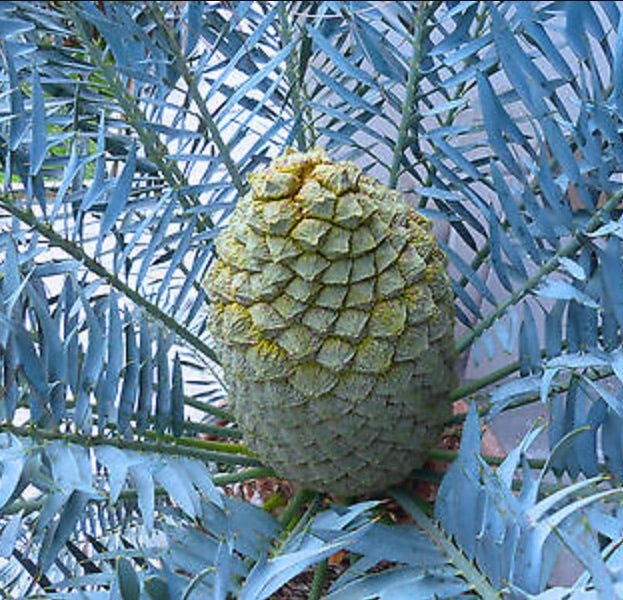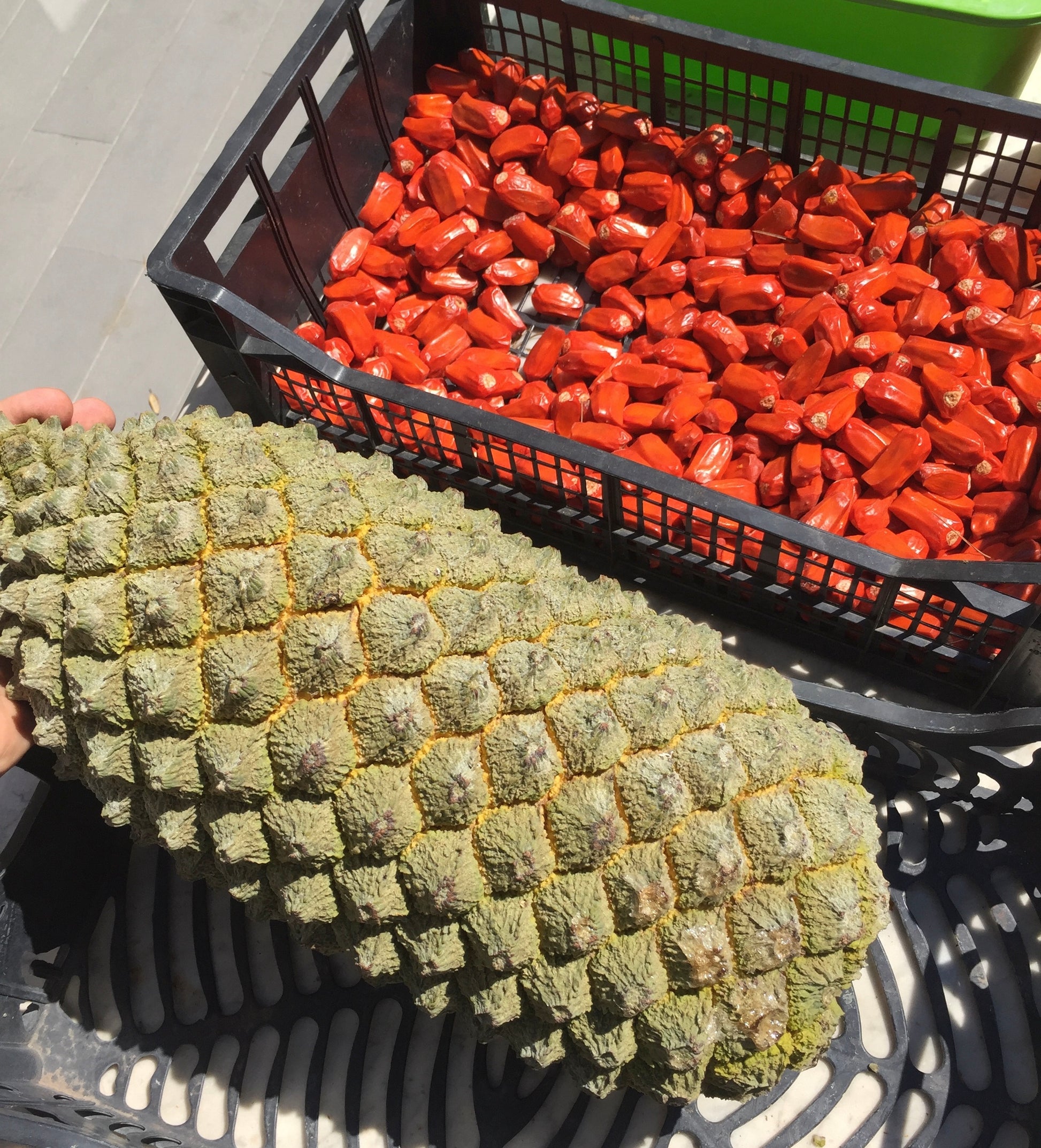Encephalartos trispinosus is a striking species of cycad native to South Africa. Here's a description of this species along with information about its discovery and tips on cultivation from seeds:
Description: Encephalartos trispinosus, commonly known as the Eastern Cape blue cycad, is characterized by its robust, symmetrical crown of stiff, blue-green leaves. The leaves are typically armed with three spines at their base, giving the species its specific epithet "trispinosus." This cycad forms a stout trunk over time, which can reach heights of up to several meters. Encephalartos trispinosus is dioecious, meaning individual plants are either male or female, and reproduction occurs via cones produced on separate male and female plants. The cones are usually large and cylindrical, with a striking bluish-green coloration.
Discovery: Encephalartos trispinosus was first discovered and described by the botanist John Medley Wood in 1910. Wood encountered this species during his botanical explorations in the Eastern Cape Province of South Africa. Its distinctive appearance, particularly the three spines at the base of its leaves, made it a notable find among cycad enthusiasts and botanists.
Cultivation Tips for Growing Plants from Seeds:
- Seed Collection: Collect seeds from mature female cycads when they are fully ripe. Seeds are typically enclosed within fleshy cones that will begin to disintegrate as they mature.
- Cleaning: Remove the seeds from the cones and rinse them thoroughly to remove any remaining flesh or debris.
- Scarification: Some growers recommend scarifying the seeds, either by nicking the seed coat or soaking them in a diluted bleach solution, to improve germination rates.
- Planting Medium: Plant the seeds in a well-draining, sterile potting mix formulated for succulents or cacti.
- Planting Depth: Bury the seeds shallowly in the planting medium, just deep enough to cover them with a thin layer of soil.
- Watering: Keep the soil consistently moist but not waterlogged. Water from the bottom to prevent disturbing the seeds.
- Temperature and Light: Provide warm temperatures (around 70-80°F or 21-27°C) and bright, indirect light for optimal germination.
- Patience: Germination of cycad seeds can be slow, often taking several months to a year or more. Be patient and maintain consistent care throughout the germination process.
With proper care and patience, seeds of Encephalartos trispinosus can germinate and grow into magnificent cycad specimens, adding a touch of prehistoric elegance to any garden or landscape




